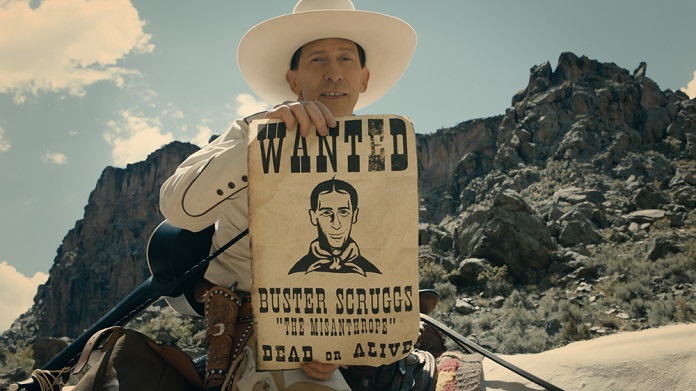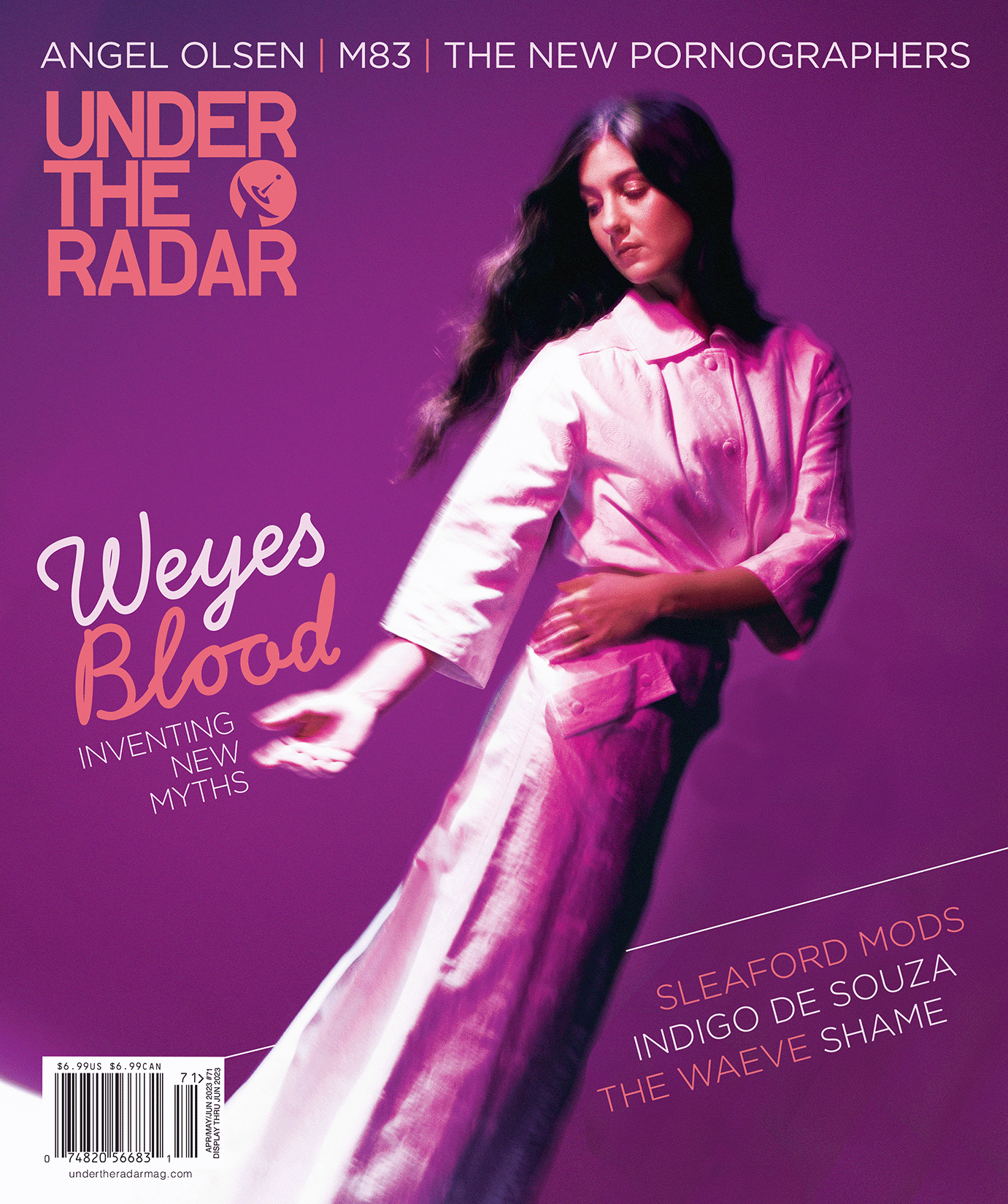
The Ballad of Buster Scruggs
Studio: Netflix
Directed by Joel and Ethan Coen
Nov 08, 2018
Web Exclusive
![]()
After thirty-five years and eighteen films, the Coen Brothers have become something of a cinematic institution. Celebrated as much for their cult classics - Raising Arizona, The Big Lebowski, O Brother Where Art Thou? - as for their popular award winners - Fargo, No Country For Old Men - the sibling writer/directors have become something of a genre unto themselves; Pitch black comedies and bloody morality tales about the outcasts, monsters and losers that inhabit the strange, dark corners of America. That last word there is probably the most instructive. Although their subjects have ranged from Prohibition-era gangsters to early ‘60s folk singers to ‘90s L.A. stoners, the Coens have set every single one of their films in America. When viewing their work as a whole, it’s easy to see it as a kind of fictional hagiography of everything beautiful and rotten about this country. And of course, what genre is more American than the Western?
The Coens have dabbled in Westerns before, most directly in their 2010 remake of True Grit. But they’ve also blended the landscapes, tropes and iconography of the genre with others, such as screwball comedy in Raising Arizona or Texas neo-noir in Blood Simple and No Country for Old Men. Their new film, The Ballad of Buster Scruggs, is superficially traditional, being set firmly in the “Old West” of the 19th century, complete with horses, six-gun duels and wagon trains. But it does represent the Coens’ first foray into two new mediums: the anthology film and Netflix distribution.
Fronted by a more subdued, prestige-friendly Netflix logo, The Ballad of Buster Scruggs consists of six short films ranging in length from barely ten minutes to over a half hour. None of the characters, actors or narratives from the six segments overlap in any way, leaving the film to be connected by broad thematic concepts like pride, determination and - since it’s the Coens - the cruelty of fate. Despite this thin connective tissue - even the framing story is just pages being turned in a worn old book - the Coens have created one of the more cohesive anthology films in recent memory, while still varying the tone and maintaining an engaging, varied pace. The first two shorts are the briefest and most comedic; “The Ballad of Buster Scruggs” features Tim Blake Nelson as the titular troubadour - who he plays as a cross between Anton Chigurh and Bugs Bunny - and “Near Algodones” stars James Franco as an outlaw who experiences a roller coaster of good and bad luck. Both are bright and playful, ending in laugh out loud punchlines at the expense of their protagonists. Scruggs himself - a loquacious maniac who cheerfully denies his reputation as a misanthrope while murdering virtually everyone who crosses his path - comes off as the Coen’s entire aesthetic distilled into a single character.
From there, the film takes a darker turn both narratively and visually. Cinematographer Bruno Delbonnel revisits the wintry blue palette of Inside Llewyn Davis with “Meal Ticket”, the grim story of Liam Neeson as a man who makes his living hauling a quadriplegic actor through the mountains to perform poetry and Shakespeare for gawping ‘49ers. This is followed by “All Gold Canyon”, a one man show for Tom Waits as a tireless prospector. The fifth story, “The Gal Who Got Rattled” is the longest segment of the film and the one that would most easily translate into its own feature. Starring Zoe Kazan - making her second trip on the Oregon Trail following Kelly Reichardt’s Meek’s Cutoff - as a shy bride-to-be who finds herself romanced by a charming cowboy. Kazan’s overly formal verbal footsie with co-star Bill Heck is a delight, which makes the turn their tale takes all the more gut-wrenching. Anyone building a case to prove the Coens are heartless cynics will probably consider this segment their Exhibit A.
And yet, in spite of the cavalier, fatalistic irony with which the Coens treat their characters, it’s difficult to argue that they don’t care about them. Even in a shortened format, the precision of their scripts and camerawork and the sheer talent of their ensemble cast makes it clear that the directors value their heroes and villains, even as they put them through the ringer. The final segment, “The Mortal Remains”, takes place over the course of a single conversation between five passengers on a overnight stagecoach. Playing like a cross between the first half hour of The Hateful Eight and an episode of The Twilight Zone, the final story is breezy, morbid and the most obviously parabolic. In it, a character revisits a line first uttered by Tom Regan, the enigmatic gangster protagonist of the Coen’s 1990 film Miller’s Crossing: “No one knows anyone. Not that well.” The Ballad of Buster Scruggs isn’t the Coen’s best film and it’s highly unlikely that it will be their last. But if it were the note they decided to go out on, it would ring very true to their careers as a whole: acerbic, beautiful and uninterested in self-explanation.
Author rating: 7.5/10
Average reader rating: 10/10
Most Recent
- Tallinn Music Week, Tallinn, Estonia, April 3-7, 2024 (Review) — Virta, Musta Huone, Mari Kalkun, Sven Grünberg
- Picnic at Hanging Rock [4K UHD] (Review) —
- Joe Goddard of Hot Chip Announces New Album, Shares Video for New Song “Moments Die” (Feat. Barrie) (News) — Joe Goddard, Hot Chip
- Premiere: O Slow Shares New EP ‘Every Time I Look In The Mirror’ (News) — O Slow
- Glasgow’s The Joy Hotel Unveils Debut Single “Jeremiah” (News) — The Joy Hotel


Comments
Submit your comment
There are no comments for this entry yet.